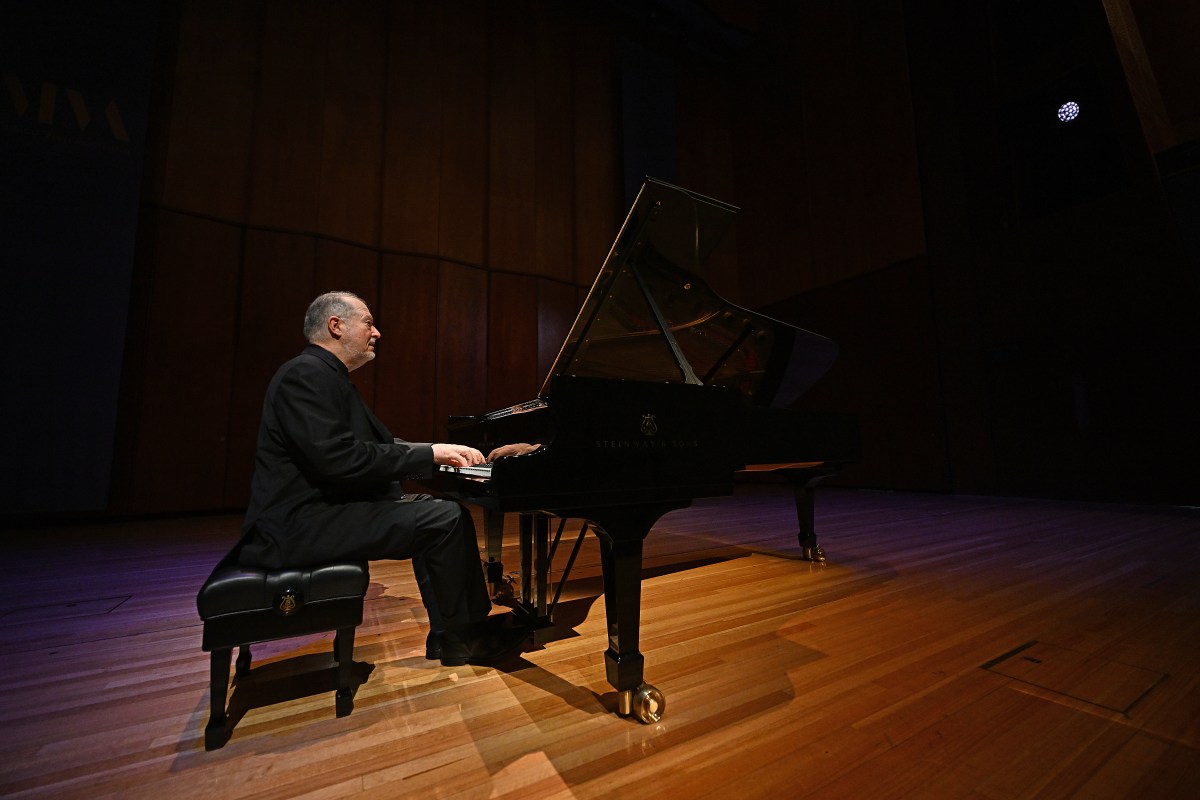The career of Garrick Ohlsson has spanned more than five decades. One of the most widely acclaimed concert pianists in the world, he famously won the Gold Medal at the International Chopin Competition in Warsaw at the age of 22 in 1970. His career then commenced as a leading exponent of the works of Chopin, Schubert and Liszt.
Not wishing to be pigeonholed at such a young age, he made a point of expanding his repertoire, broadly embracing the romantics of Haydn, Mozart and Beethoven among many others. His discography is impressively large.
He last appeared in Australia in a seven-city Musica Viva recital tour in early 2020, just prior to COVID. He is making a welcome return with two separate programs, again touring to seven centres. The programs highlight works by Schubert, Chopin and Liszt, alongside Debussy, Alexander Scriabin and Samuel Barber with a new work by Australian composer, Thomas Misson.
Program 1 commenced with Schubert’s Impromptu in C minor, Op.90, No.1, surprisingly the first time that Ohlsson has played this work. This first Impromptu characterises much of Schubert’s music, overwhelmingly sad yet hauntingly beautiful with a sense of resignation that is ultimately optimistic. Ohlsson’s phrasing from the outset was impressive, creating a perfect musical balance and symmetry, with some marvellous pianissimo. With both hands playing entirely different chords and notes, he created the most wonderful soundscape, managing the harmonics with great sensitivity. The final whisper-light notes before the heavier last notes were mesmerising.
Liszt’s Piano Sonata in B minor has a chequered history, in part because of its unconventional form in ignoring the traditional three or four movements. The piece was at first ill-received, while its complex and quite jarring and modern musical structure makes it fiendishly difficult to play. Today it is recognised as one of the major highlights of Liszt’s piano works.
Ohlsson commenced the work forcefully, its traditional three dark notes in descending scale morphing into an exhilarating dialogue between the two hands, offering many sonorous and exciting variations. Liszt’s fierce and repetitive arpeggios were deftly managed, the runs up and down the keyboard demanding great agility and much crossing over of hands. The slow movement followed with its gentle and lyrical melody.
The pianist gave us some enchanting and elegant trills, creating a range of musical colours that appeared to be more than just his two hands at work, the sound was so fulsome and impressive. The absolute lightest of touches from his fingers on the right hand were matched with the distinct pounding of lower notes by the left. The final section returned to the opening leaping octaves in a recapitulation that was as ferocious as it was powerful.
Ohlsson handled this thunderous fugue with a masterly attention to detail and a clarity of sound, belying the difficulty of the work.
Tasmanian composer, Thomas Misson’s world premiere work, Convocations, was commissioned for Musica Viva by Stephen Johns as a present for his wife, Michele. Misson states that his compositions are inspired by the extremes of the human condition in all its imperfections. Reflecting on how his own creative voice could complement Ohlsson’s program, he composed this work by channelling a piece by Liszt, ‘Sposalizio’ from Années de Pèlerinage, combining elements of the Romantic piano composers with other key themes.
Convocations opened with two important themes, those of peace and conflict, represented by the duality of the two hands on the piano. It started as a melodic, almost ethereal piece, nicely textured and sparkling with a colourful sonority. It certainly resembled some of Liszt’s music and even the Piano Sonata we had just heard.
It allowed Ohlsson a certain freedom to be expressive with each hand able to playing contrasting notes with differing dynamics. There was some lovely sweeping legato from this strongly romantic, if distinctly modern, composition. It concluded by being hopeful and uplifting with some soft tinkling notes in the highest register. A beautifully composed, well-delivered piece.
Ohlsson is a self-confessed aficionado of the Russian composer, Scriabin, whose work is based on late romanticism, while equally exploring more modern concepts of melody, harmony and texture. Ohlsson chose to present a selection of his work over a 20-year period.
He started with three of Scriabin’s famous Études (studies), short works that give a sample of his musical style. The first, Étude in C-sharp minor, Op.2, No.1, a lyrical, sweet melody, was played charmingly by Ohlsson with not a hint of sentimentality. The next, Étude in D-flat major, Op.8, No.10, a lightning-fast scherzo, offered fiery playing that gave way to passages of pianissimo and a triumphant finish. Finally, the hauntingly rhythmic, almost macabre Étude in C-sharp minor, Op.42, No.5 was relished powerfully by Ohlsson.
Scriabin’s Two Poems Op.32 further demonstrated the exploration of melody and dynamics. The first has a soft, languorous tone with a gorgeous melody and colourful palette. The second contrasts by being a forceful piece that Ohlsson attacked with strength, leading him nicely into the Piano Sonata No.5, Op.53.
Recognised as one of Scriabin’s most impressive works, taking both mood and pianistic virtuosity to the extreme, the fifth sonata is enormously powerful and volatile, on one hand, and languid and melodic on the other. Almost dichotomous music for the pianist, with its sudden frenzied activity, interspersed with whisper-soft pianissimo, Olsson’s muscular and technically authoritative playing was its match. He gave an absolutely spell-binding, completely absorbing performance of this amazing and complex work. It was nothing short of a triumph of virtuosity and technical mastery.
Read: Exhibition review: Rembrandt: True to Life, NGV International
An encore saw a final piece from Chopin. His Nocturne No.9 in E-flat Op. 2 was everything it should be – beautiful, light, delicately savoured and completely romantic. All Ohlsson’s finger work, arpeggios, carefully crafted hanging notes and pianissimo, played ever so lightly but with real intensity, were perfectly delivered.
ArtsHub attended this concert in Brisbane on 1 June. Musica Viva is touring Garrick Ohlsson in recital to seven cities until 19 June 2023.





